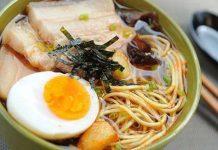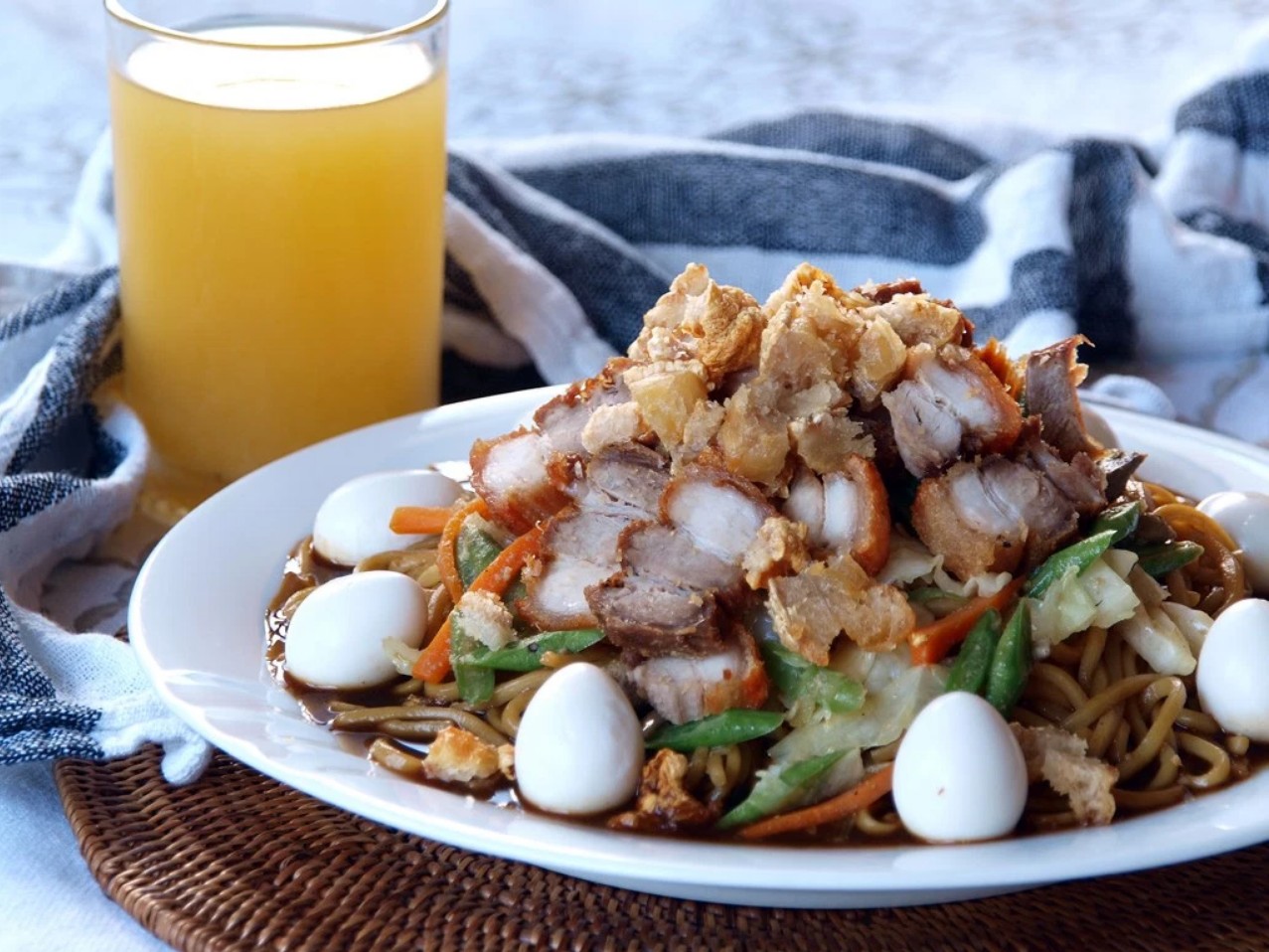Pancit Cabagan is one of a delicious noodle dish that originated from the Isabela province, like any other noodle dishes in the Philippines its roots are of Chinese origin. This dish looks like a cross between the Pancit Canton and Pancit Palabok, sometimes it nearly looks similar to Hokkien Mee but had more sauce.
According to the research conducted, in the year 1987, a group of Chinese traders who originally came from Amoy (now Xiamen), China landed in Aparri, Cagayan. One of the traders was said to be responsible for introducing pansit in Cabagan. His name is Sia Liang also known as Dianga. Dianga married a Filipina named Augustina Deray Laddaran, who established a panciteria in Cabagan during the pre-war period.
Dianga made his own “miki” (uncooked noodles). He used first class wheat flour. The dough was mixed with lime (lejia), derived from guava fuel, kneading it with a long and strong rolling pin that is attached to the wall. After the dough is flattened, it is thinly sliced using “campy” or the Chinese butcher’s knife to form the noodles. The original Pancit Cabagan cooked by Dianga was said to have the following ingredients: “hibi” (small dried shrimps) or pork, bagoong, soy sauce, cooking oil and pork broth.
When one of his workers in the restaurant learned and mastered the “miki” production, he put up his own “miki” outlet and “pansiteria”, which was later on followed by other people in the municipality.
During World War II, Dianga’s restaurant got burnt. However, Dianga’s daughter, Potenciana Sia-Villa, opened a new restaurant after the war of which was called The New Life Restaurant. Some years after, a few more restaurants that sell Pancit Cabagan were established. These were Mary’s Reastaurant, Luring’s Panciteria, Ferring’s Restaurant and Evergreen Restaurant. None of these restaurants are still open these days, but new ones are established. Nowadays, restaurants in Cabagan that specialize in pancit are Aling Kikay’s, Josie’s and Felecita’s. These restaurants have their own version of Pancit Cabagan which are all worth-trying.
As the years passed, the recipe of Pancit Cabagan has improved a lot, and has now gained popularity in different parts of Luzon. The new recipe has added garnish such as crunchy “‘lechon carajay’, and boiled quail eggs.
Did you learn something new? Yes you did.
Give it a try to cook this one of the delicious noodles in the country.
Serves:8
INGREDIENTS:
- 1 kg “Miki” noodles
- 300g pork belly, sliced
- 200g pork liver, sliced
- 2 cup pork chicharon, crushed
- 2 dozen quail eggs, hard boiled
- 6 cloves garlic, minced
- 2 onion, finely chopped
- ½ head cabbage, julienned
- 1 bunch French beans, julienned
- 1 carrot, julienned
- 5 cups chicken stock
- ½ cup soy sauce
- 2 tbsp hoisin sauce
- 3 tbsp oyster sauce
- 3 tbsp cornstarch
- fish sauce
- freshly ground black pepper
- lemon or calamansi
- salt (pour according to your taste, too much salt is bad for health)
HOW TO COOK:
- Cook fresh noodles according to packet instructions. Drain the set aside.
- Season pork with salt then heat up a wok. Add oil then fry pork belly until brown and crispy, remove from wok then set aside.
- In the same wok, sauté garlic and onions.
- Add in the pork liver then stir fry for a minute.
- Add carrots, French beans and cabbage then stir fry for 2 minutes. Remove from the wok then set aside.
- Mix cornstarch with 1 cup of stock then set it aside. Pour 4 cups of chicken stock, hoisin sauce, oyster sauce and soy sauce, bring it to a boil. Once boiling pour the cornstarch mixture and simmer until sauce thickens. Flavour with fish sauce if needed then season with freshly ground black pepper.
- Fold in the noodles and half of the vegetable mixture in the wok, turn of the heat then place in a plate.
- Top with remaining vegetable mixture, chicharon and quail eggs then serve with lemon or calamansi on the side.
9. Serve hot and enjoy!
LOOKING FOR MORE? Visit list of pinoy recipe
Credits to: shiningmom.com & angsarap.net



















